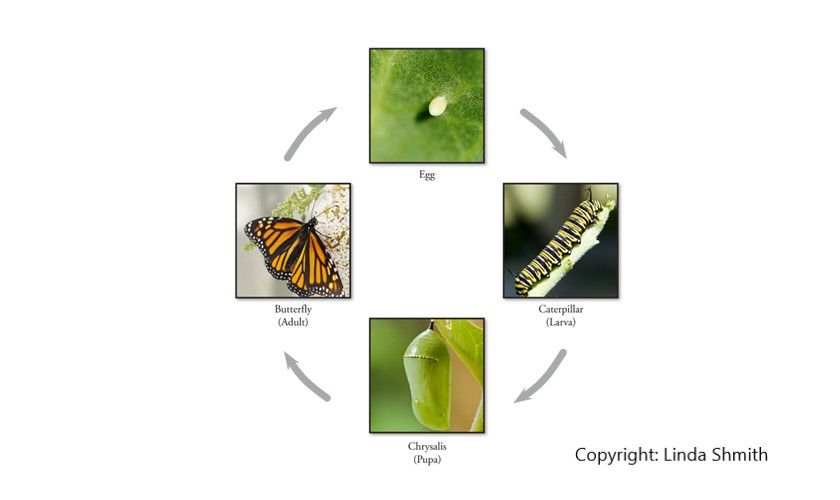Butterfly Life Cycle

Nectar plants
Nectar is the food of butterflies (and moths) and is taken up through the long proboscis which is normally tightly coiled below the butterfly’s head. Without an appropriate nectar source in an area, butterflies may not be able to breed as nectar is necessary for sustaining the activities of butterflies especially for mating and egg laying.
Host/Food plants
The right plants in the right place can help butterflies survive.
Host plants are food for the caterpillar stages. These plants are being re-introduced into areas where they formerly occurred. For example: the bitter-bush blue butterfly’s host plant Adriana quadripartita var klotzchii or ‘coast bitter bush’ is being planted on coastal dunes and in wetland areas, the saw sedge Gahnia spp. is being planted as this is the host plant of several small brown skipper butterflies.
Sometimes butterfly habitat is threatened by spraying or removal of their host plant. For example, the caterpillars of several blue butterflies feed on native mistletoes in the Mt.Lofty Ranges. In some areas where mistletoes are numerous, eradication is being proposed by local government. This may eradicate colonies of butterflies as well as the mistletoe.

